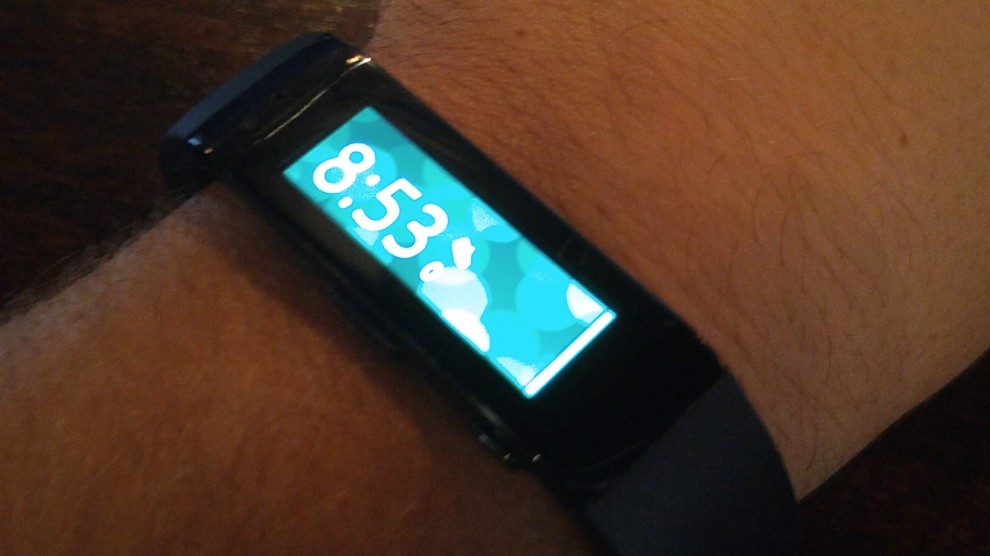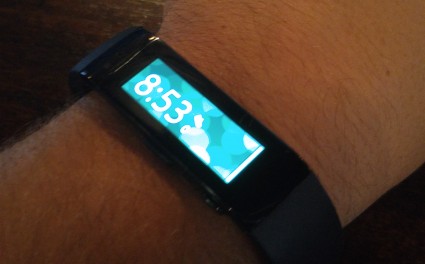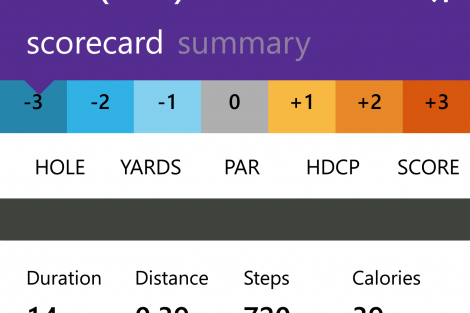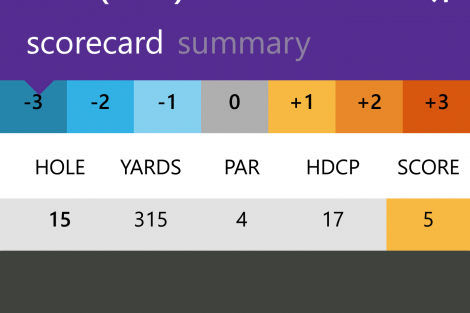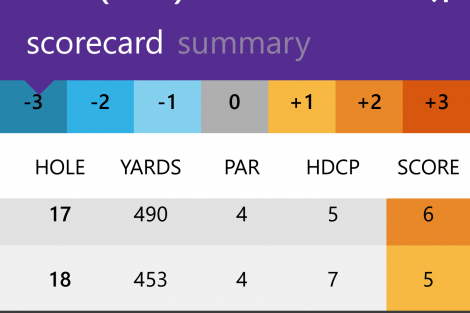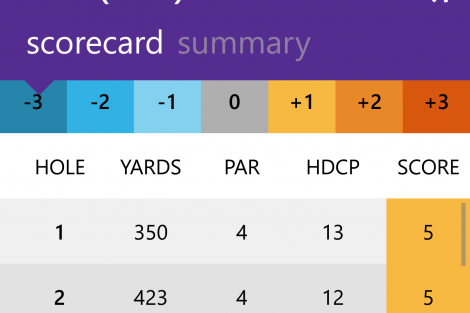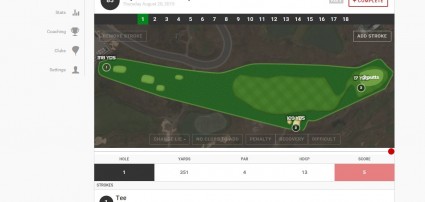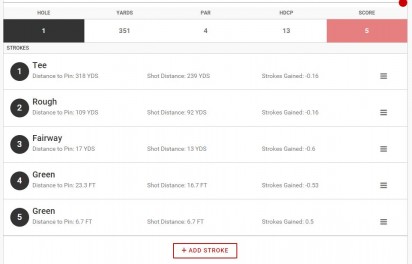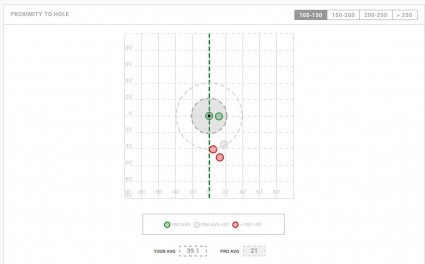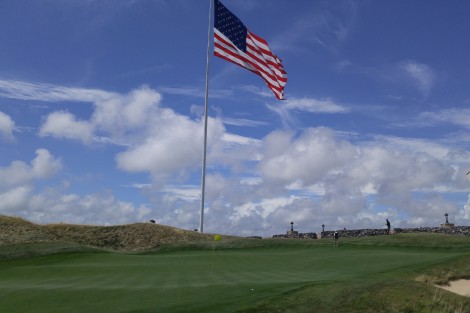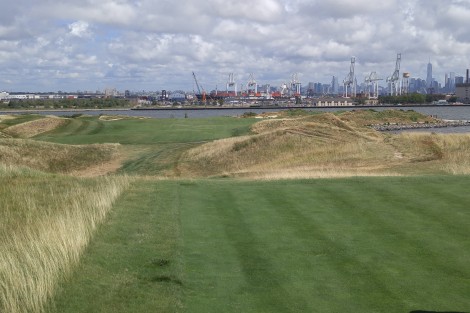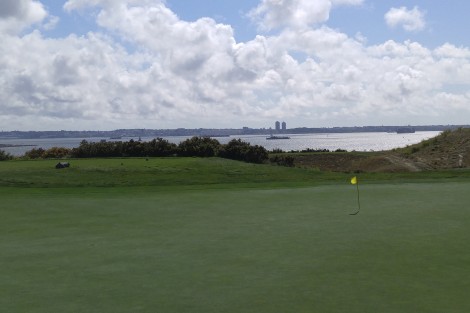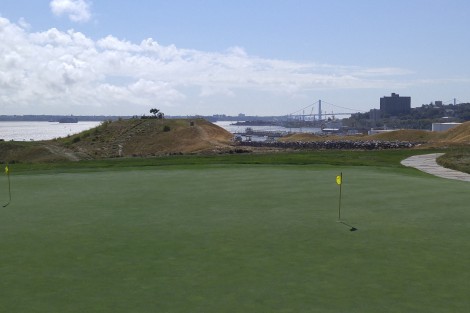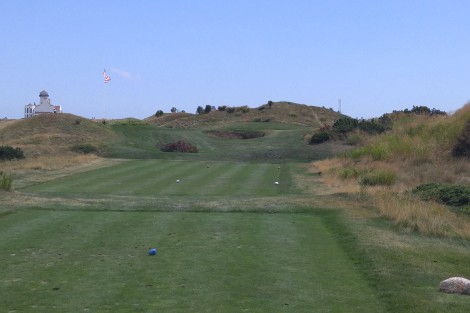BAYONNE, N.J. -- If you've been around golf long enough -- maybe a few hours -- you've probably heard someone say: "They don't make you draw pictures on the scorecard."
Well, maybe they should.
If you had to draw a detailed, satellite-view picture of every hole you played, you might have a greater appreciation for how you play golf. The drawings would tell you where you tend to put the ball off the tee, if you hit greens in regulation, how well you putt from various distances and see how you see a golf course through how you approach the game.
In other words, the pictures would be illustrative, but time-consuming. The good news is that technology has come along that will do that work for you.
A number of products have come along -- and more are coming -- that aim to track each and every shot you play, then process them and spit back out data that slices and dices your game. All of them have slightly different ways of capturing the data but all use GPS technology to compare your position on the course to a mapping of it, and that's how the device and its analytical packages know where and off what you're hitting.
The thought is that if you know what you do well and poorly on the course, then you'll have a plan of action for how to improve. It all makes sense in concept, but each of the earlier products to market have fatal flaws.
Game Golf, which came out first, requires users to tap a sensor, screwed into the butt end of each your clubs' grips, to a tracking device which contains the GPS technology that tracks your shots. If you forget to tap, or just object to the whole idea of it messing with your pre-shot routine, then the utility of Game Golf morphs into a minor annoyance.
In response, the Game Golf folks have introduced a mobile app that largely renders the hardware unnecessary. Instead, a user manually logs their shots using their mobile device's GPS.
Then came Arccos, which promised better and was $100 more expensive right out of the gate. The step forward for Arccos was that the golfer didn't have to tap anything. Instead, Arccos uses Bluetooth technology to pair each of the sensors with your phone, using the on-board GPS to track shots live and offer instantly updated statistics. Sounds great and works well, but Arccos only works on Apple devices, locking out a huge portion of golfers who have Android devices. No bueno.
Adoption has been sparse. Apple doesn't divulge how often an app has been downloaded, but the Game Golf app has been downloaded some 10,000-50,000 times in the Google Play store. Even on the high end of that estimate, that represents just 0.2 percent of golfers in the U.S.
The true power of these devices will be unlocked when a critical mass of golfers start using them, supplying millions of data points that big, brawny CPUs can process into game-changing -- literally -- insights for players of all skill levels. It's a chicken-and-egg problem for both of these start ups that have great ideas but lack the name recognition that will convince golfers to plunk down $200-$300 and trust their platform.
Enter TaylorMade and Microsoft. Those names will get your attention.
About a year ago, Microsoft pitched its tent in the wearable technology frontier with its Band product. The Band wasn't built to be intrusive, so there aren't apps out the wazoo. Rather, Band aims to provide pertinent, cursory information so a user can look down, catch up and move on. It'll let you know when you get a call, a text or an email and give you what you need to know.
At the same time, Band is also a fitness-tracking product. It has an on-board GPS and a heart-rate monitor built in. That means runners don't need to lug their phones around to map their routes or get feedback on their speed and vitals. The same is true for workouts. It also can monitor your sleep to make sure that when your head hits the pillow that it stays there instead of tossing and turning.
The folks at Microsoft wanted to delve deeper, however, into sports and activities that could benefit from a blend of the Band's best features. Golf was a natural fit. It's like a very slow run with lots of zigs and zags, so the GPS and heart-rate monitor is perfect. The display can offer timely info about distances, shots and more.
However, the company didn't want to brazenly try to figure out the golf experience and hope it got it right. So, Microsoft turned to TaylorMade to help them build their golf product. Even further, the companies worked together to come up with a post-round statistical package that would offer even better stats than the likes of Game Golf and Arccos, which has an investment from Callaway Golf.
TaylorMade and Microsoft came up with and, two weeks ago, came out with, the Microsoft Band golf app and the stats package, called MyRoundPro.
A small number of media were introduced to the product at Bayonne Golf Club, a super-high-end, private golf club across from Manhattan, accessible by ferry for the Wall St. types who float over for a post-trading-session nine. The club was built on a reclaimed brownfield, turned from a garbage dump into a windswept links that aims -- and succeeds -- in invoking images of an Irish out-and-back.
We were each given a Microsoft Band and asked to download the Microsoft Health app to each of our mobile devices, platform agnostic. After creating an account and pairing the app and the device, we also created a MyRoundPro account to make sure the data the Band captured went cleanly into the statistical package. (You can create a MyRoundPro account without a Band, but you'd have to manually enter in your scoring data and plot your position on each shot.) It was all very simple and seamless.
Out of the box, the Band carries enough of a charge to play a full round. At full charge, it can handle a full day's activities, including golf, with no problem. It quickly began feeding in text messages and emails that I hadn't yet read on my phone. The slight vibration is enough to let you know that something's happened, but isn't so obtrusive that you're convinced the stock market crashed or the dog escaped.
The Band is meant to fit somewhat tightly to the skin so that the heart-rate monitor can do its thing. The clasp is easy to use and customize the fit. The Microsoft folks say that the Band was actually designed for the touchscreen to be on the underside of your wrist so that notifications are a wrist turn away, not distracting every time and not broadcasting to the world that something is happening. Good for the board room, good for golf.
We headed out onto the incredible Bayonne layout -- which I won't inundate you with, but there are pictures at the end -- and were asked to find the golf tile on the Band to get the round started. The GPS then finds where you are in the world and returns back the course you're playing. It took maybe 45 seconds, which is typical for these kinds of locating services. Using one of the two buttons on the Band, the Action button, I told the Band to start the round.
The Band found I was on the par-3 14th with an incredible view of New York harbor. With another press of the Action button, Band can calculate your distance to the front, middle and back of the green. It takes a handful of seconds. Since I use a laser rangefinder when I play, that's not an especially useful feature, but it's good to have in a pinch.
In its normal state, the Band shows the hole and the number of strokes. After I hit my tee shot to start the round, it ticked up to 1. It registered putts well, too, though the Band can sometimes miss a tap-in if you don't wait at least a few seconds to let the device refind your location. If the Band misses a stroke, or maybe you decide to drop three balls and hit them all into a green, you can add or subtract strokes from your score with a slide of the finger to the left or right on the touch screen.
At the end of each hole, the Band will tell you what it thinks you had on the hole as a way of recapping. It's there you can adjust, or you can use the Action button to pause the round, go back a hole or two, and readjust scores later. It's your call.
The Band vibrates when it picks up that you've changed holes, which is based on where it has mapped tee boxes. Typically, the Band had little trouble at Bayonne, though it did jump back and forth between the sixth and seventh holes because the seventh tee box is sometimes in play for the sixth. At my home club, the holes can be even closer together, and that can confuse the Band, just as it does any GPS unit. It's not a flaw exclusive to the Band, we're simply just asking a lot of the civilian version of this technology to pinpoint us to the foot.
After what was about a five-hour round, the Band still had plenty of juice left. You have to tell the Band that the round is over, and that's just another use of the Action button, just like pausing the round, to tell it that you're done. Quick and easy.
The really nice thing about the Band and MyRoundPro is that the data transfer is live, if you have your phone with you and it's connected while you're playing. If not, it transfers when it gets again paired with the phone. Unlike with Game Golf when using its sensor-fob combo, there's no need to hook up the Band to your computer to transfer round data. (Arccos Golf does it live and without a PC, too.)
To get some cursory data about the round, you can fire up the Microsoft Health app. It'll tell you your score, how long in took to play the hole, how many steps you took, calories burned, as well, something I find fascinating, heart rate.
Microsoft says it has second-by-second data on your heart rate, so I begged them at some point to show heart rate not only hole-by-hole but also from shot-to-shot. For instance, my peak heart rate at Bayonne was on a fairly stress-free hole for me, but my partners struggled. Could I have been nervous for them, jacking up my heart rate? For some fellow media there, their heart rate was lowest when they were playing poorly. For others, it was at the height when they could go for it on a par 5. We're all a little different.
The Health app will also deliver a small map of what it has captured as your shots, their locations and distances.
That info alone is enough learn something and have a good 19th hole conversation with your buddies.
However, the Band doesn't capture every shot appropriately. And when you add and subtract shots from your round, especially well after the shots in question happen or don't, the Band has no clue where those shots happened. That's in addition to, as we discussed earlier, the inherent issue of asking GPS to nail our planetary location to the inch so that it knows we're in the first cut, not the second.
That's what the Web-based -- and, eventually, it'll have an app -- MyRoundPro interface comes into play. When you login, the MyRoundPro home page shows a list of your rounds, which you can click into individually to clean up your data. It can feel tedious, which is a flaw, again, of the product category, not just the Band. However, if you want to get the most out of the statistical package -- which is the payoff here -- then you've got to put in the time, about 20 minutes after your round, to make sure the shots are located properly and to apply the right clubs to each shot. MyRoundPro will also let you assess penalty strokes, lie difficulty and more to give true color to your shots. When you're done, you Complete your round.
Then you can dig into the data, which centers around the strokes gained approach of Mark Broadie, who pioneered the concept which is now used on the PGA Tour as one of the best indicators of per-shot and total round performance. He consulted with TaylorMade on bringing that concept to the masses and their game. However, the power of strokes gained (in most of our cases, really, lost) is in having detailed data about each shot, position, type, etc. So, what you get out of any of these products, especially the Band and MyRoundPro, is as good as what you put into it.
The data is presented well. It shows a summary of your data over your golf life with the Band, which can be filtered to show specific time periods or courses. The dashboard shows strokes gained in driving, the approach game, short game and putting. It shows traditional stats, too, like fairways hit, GIR, putts per round and sand saves. It'll show how you score on par 3s, 4s and 5s. Then you dig in more, looking and how you do in each aspect of the game, mapping your play compared to pros and normal golfers. There's dispersion and accuracy charts. Turns out, I'm a really good chipper. It's fun to see and pretty easy to understand. Over time, you can build an honest profile of your game, where it's been and where it needs to go.
What I really liked hearing and seeing from the Microsoft and TaylorMade folks is that they're committed to consistent, iterative improvement of the product. That's tech speak for: They're going to release new features and upgrades every few weeks, for both the Band's firmware to track golf and the MyRoundPro package. I've already seen several. I wouldn't be shocked if, not too long from now, the Band will be able to learn which club you're swinging based on the speed clocked by the on-board accelerometer, eliminating the need for sensors in your clubs that are found in other products or the need to tag shots post-game in MyRoundPro.
More data will begat more insights which will influence the data we can access about ourselves. We'll learn how the prior night's sleep affects your play. Maybe how drinking does. How your heart works when you play, especially when the pressure is on. And there's so much more to discover. It's important to separate the potential from the reality, but the data is being collected already. Now it's a matter of presenting it when it reaches critical mass.
For the cost, the Microsoft Band with MyRoundPro is a steal. You can get the band for anywhere from $150 to $200 right now. (A new, thinner model is said to be on the way soon.) MyRoundPro and the Health app are free, so there's no additional cost there. Not only do you get the golf tracking product, but you get a pretty solid wearable that can double as your fitness and sleep tracker, as well and on-course touchpoint to the outside world (or you can turn that off when you play).
No product in this category is perfect. They're all hampered by certain technology limitations. They don't get every shot perfect. So, in an imperfect world, you have to find a solution that's best for you. The Microsoft Band product is certainly worthwhile of being among your top choices.
And, now for Bayonne pictures:

